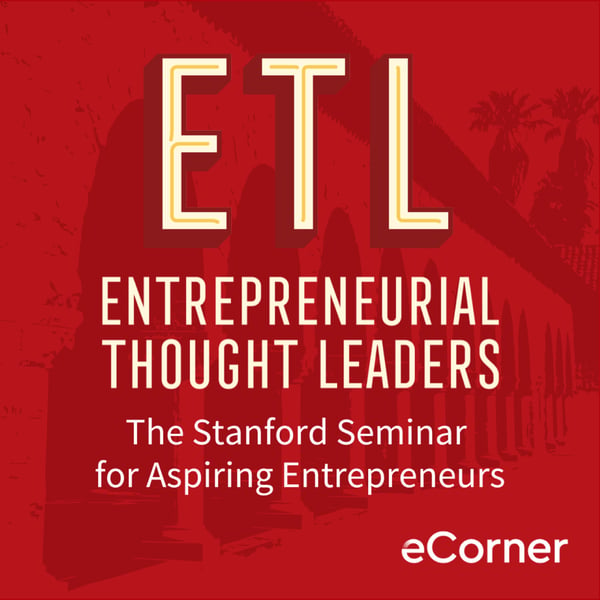Designing the Life You Really Want - From the ETL Archive
Entrepreneurial Thought Leaders (ETL)
Stanford eCorner
4.4 • 739 Ratings
🗓️ 1 January 2020
⏱️ 61 minutes
🧾️ Download transcript
Summary
Look back to one of our favorite talks from the ETL archives. Dave Evans, co-founder of the popular Life Design Lab at Stanford University, discusses the key concepts and exercises that guide students in their quest to figure out what they want to do in life. He underscores the importance of accepting who you are and connecting that to what you believe and do, while attacking dysfunctional notions like the one that dares you to be the “best version of yourself.” Can’t we have more than one?
--------------------
Stanford eCorner content is produced by the Stanford Technology Ventures Program. At STVP, we empower aspiring entrepreneurs to become global citizens who create and scale responsible innovations.
CONNECT WITH US
Twitter: https://twitter.com/ECorner
LinkedIn: https://www.linkedin.com/company/stanfordtechnologyventuresprogram/
Facebook: https://www.facebook.com/StanfordTechnologyVenturesProgram/
YouTube: https://www.youtube.com/user/ecorner
LEARN MORE
eCorner Website: https://ecorner.stanford.edu/
STVP Website: https://stvp.stanford.edu/
Support our mission of providing students and educators around the world with free access to Stanford University's network of entrepreneurial thought leaders: https://ecorner.stanford.edu/give.
Transcript
Click on a timestamp to play from that location
| 0:00.0 | Who you are defines how you build. |
| 0:05.0 | This is the Entrepreneurial Thought Leader series. |
| 0:09.0 | Brought to you by Stanford E-Corner. |
| 0:13.0 | Thanks for tuning into this special New Year's episode of the Entrepreneurial Thought Leaders series. |
| 0:19.0 | We're not just celebrating a new year, |
| 0:22.1 | but a whole new decade. To start the 2020s off on the right foot, we're re-releasing |
| 0:27.9 | a truly inspiring talk from 2017 featuring Stanford Life Design Lab co-founder Dave Evans. |
| 0:36.9 | At Apple, Dave led the team that designed the original mouse. And in this |
| 0:41.4 | episode, he talks about how students, professionals, and really anybody can apply design thinking |
| 0:47.4 | to unique and sometimes messy problems of life itself. Here's Dave. So we're here to talk about this designing, how design thinking might apply to your life. |
| 1:02.0 | That's not starting a company, but you know, managing your life if you're going to start a company is a pretty challenging thing. |
| 1:08.0 | So what this thing is all about, first of all, Bill, we're not my partner who is not |
| 1:12.3 | here. |
| 1:12.5 | He's actually doing something similar to another building on the campus right now. |
| 1:15.9 | So 10 years ago, Bill and I got together, had lunch, started talking about this thing and said, |
| 1:19.7 | hey, let's do this in the summer of 2007. |
| 1:23.7 | And that turned into what is now called the Life Design Lab. |
| 1:27.0 | And if the Life Design Lab, our mission is very simple. |
| 1:28.3 | It is to apply the innovation principles of design thinking to the wicked problem of designing your life at or after university. |
| 1:35.3 | That's a carefully crafted elevator pitch, all the colored words. |
| 1:38.3 | If you click on them, you get a white paper. |
| 1:40.3 | Most people go, what does that really mean? That sounds great. |
... |
Please login to see the full transcript.
Disclaimer: The podcast and artwork embedded on this page are from Stanford eCorner, and are the property of its owner and not affiliated with or endorsed by Tapesearch.
Generated transcripts are the property of Stanford eCorner and are distributed freely under the Fair Use doctrine. Transcripts generated by Tapesearch are not guaranteed to be accurate.
Copyright © Tapesearch 2025.

